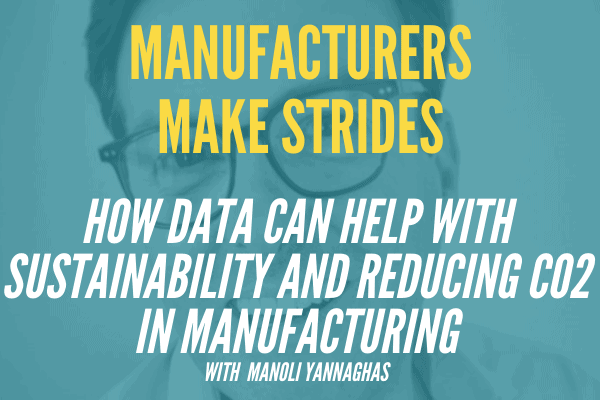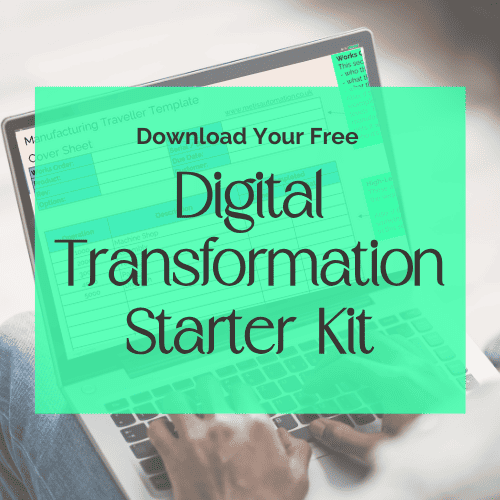I spoke to Manoli Yannaghas, who is the CEO and co-founder of VoltVision, to find out more about what sustainability in manufacturing means, and how we can use data to reduce our corporate carbon footprints.
Manoli, who has more than two decades of industry-specific experience, shares some of his company’s goals for the future, his thoughts on reaching net-zero, and some actionable tips on how to cut costs you didn’t even know you were spending. He explains how to cut up to 20% of operations, how to overcome challenges as a start-up and more.
Check out the video to hear what he has to say!
How you got involved in electrical power systems?
I spent 20 years working in the mining industry, running small mining companies or operations around the world. And about five years ago, I decided the ongoing problem of mining is it’s either unstable power or very expensive power. So, my partner and I Malcolm Evans, who’s the co-founder with me on VoltVision decided that renewables were a very interesting way to help mines stabilise their power and reduce the power costs and their CO2. So, initially, our business was around how to transfer a traditional power system onto a renewable power system.
What are the goals of VoltVision and how do you see it growing?
Most of the businesses that we work with are high voltage which is a lot more complicated than low voltage. So we are interested in providing intelligence to asset owners. We started with the mining business and help our clients better understand how they’re using the machinery in their production plants. We do that by recording very high-resolution data from existing electrical equipment that would otherwise be lost. It’s all there, but it’s just not being extracted. I think a lot of people out there are running around installing lots of sensors here, there and everywhere. But if you look at it closely, you don’t have to do that. Plus, on high voltage, you can’t do that because people won’t let you into their substations to mess around with their equipment.
The big generators, the transportation network and the very large manufacturing companies cars would be high voltage. We’re interested in providing intelligence to these clients, explaining to them how they can reduce their power costs. Take motors for example. Electrical motor systems take up half of the electricity used globally and 70% of that is used in the manufacturing community. So it’s a big deal. We study motors to help them reduce their power, reduce their CO2 and increase sustainability. And that’s really around life, so we can better help them use those pieces of equipment in a way that that machine will last longer using, for instance, an advanced fault identification to spot when a machine is being overused. We’re about using data to provide intelligence to industrial, or in our case, mining clients.
Do you think there are opportunities within power usage that people aren’t aware of?
Yes, 100%. There are so many opportunities around motors and around power systems. The electrical equipment that is being produced now is more intelligent than has ever been. There are many computers, much of what’s sitting on the electrical networks, and they’re collecting lots and lots of data. So for the first time, you can actually see what’s going on, and why a system isn’t running very well.
I think with open-mindedness there’s the ability to cut 20% of most existing operations that are not being monitored. The people building a manufacturing plant will oversize because they don’t want anyone coming back at them. So quite often you’ve got a lot of oversized kit and you don’t know when a conveyor belt is running. Maybe it shouldn’t be running because there’s nothing on it. So there are multiple angles to easily reduce CO2 emissions by knowing what you’re doing and having someone shine the light into the dark room.
Do you have an example of how a customer has reduced their energy usage?
I’ll use the example of one mine who actually didn’t use our system because it wasn’t ready. But, they went to one of the largest mines in South Africa, and said, okay, let’s do an audit of exactly how much power we’re using here and where it’s all going. It took them a year and they changed out 40% of their motors and saved themselves over 20% in power. This is what we do on a continuous basis. Most big companies get an audit twice a year on the performance of their motors on retrospective data. But, you can do more than that now. You can see when you start overfeeding a motor and you can bring it back in line very easily. It doesn’t require any Capex to do that.
What are the key things that work when turning a failing business around?
Firstly you have to be willing to be present. If you’re away from something, and this is one of the tricky parts of small mines, you’ve got to be there on-site. It’s really about changing culture, changing people. One of the hardest things to do is to go into an existing business and effectively saying, I’m afraid it’s not working, you’re not working and you need something new here. Being really robust about that can create an awful lot of short term problems. It’s emotionally quite difficult.
Secondly, something we had to do was to take a very badly designed manufacturing plant over the line. In the end, the investment just wasn’t there to change what needed to be changed. A lot of smaller companies just try and stick it together with sellotape and rubber bands. This will work in the very short term but not in the long term, and they spend a fortune trying to plug the holes.
We’re doing some work with a client at the moment who are doing a ground-up, brand new plant. It’s a hydrogen electrolyser down in South Africa. They’re changing their entire truck fleet from diesel over to hydrogen battery hybrids. What’s nice about this project is that because it’s brand new, we get to have a say in some of the equipment needed in order to make it really good. It’s also really nice to see a big company design something from the bottom up, because they know what they’re doing and they do it really well. They’ve got the budget.
What’s the best way for people to get in touch with you?
My email address, which is manoli@voltvision.live. That’s probably the best way, or just go to our website, www.voltvision.live there’s a link through where you can get in touch with me there.




